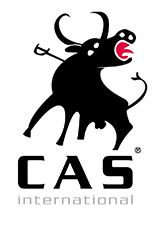The suffering of horses in the bullring
 Most people are not aware of the fact that horses are used during bullfights, again and again. During the bullfight they are confronted with stress, they see the suffering of the bull and smell blood and death in the arena. Sometimes they themselves get injured and die.
Most people are not aware of the fact that horses are used during bullfights, again and again. During the bullfight they are confronted with stress, they see the suffering of the bull and smell blood and death in the arena. Sometimes they themselves get injured and die.
Use of horses in bullfights
Horses are used in several types of bullfights and sometimes during cruel festivities with bulls as well. Nowadays, the breeds mostly used are: Lusitano, Anglo-Arabian, Hispano Arab or horses with a mix of Breton or Pecheron.
During the bullfights in Spanish Style (during which the bull is killed in public) the picador is on horseback, and stabs the bull in the muscles of the neck. The bull suffers tremendous pain. In panic, he mostly ‘attacks’ the horse. During this type of bullfights the horse wears a protection blanket but sometimes this is damaged by the horns of the bull. In those cases, the horse gets injured, often with dramatic consequences. Then, the chances are high that the horse dies in the bullring or will have to be put down.
A bullfight is a source of enormous stress for the horse. The horse is blindfolded, he gets disorientated, he can’t run away and can’t see where the danger comes from. The horse can’t see the bull when he is being attacked. Frequently horses fall over during these attacks.
During other type of bullfights, the horse does not wear a protection blanket and is not blindfolded. This happens during the rejoneos/corridas de rejones. In this type the bull is being fought from horseback. The horses have been trained to dodge the horns, but this obviously is an enormous source of stress. They also run a high risk of getting injured.
Depending on the type of bullfight they will be used for, first they may receive a training, for example to ignore specific impulses. When the horse is not blindfolded in a rejoneo/corridas de rejoneo the horse is taughed not to run away from the bull.
Horses are not only used in bullfights in public, but also in ‘training bullfights’ in bullfighting schools. And horses and mules are used to drag away the bull out of the bullring after a bullfight. Sometimes the bull is still alive, but totally paralyzed and unable to move. The use of horses in the bullfighting sector is much higher than most people expect.
Horse Cagancho
Sometimes, when a horse has done a good job according to bullfighting lovers, he is allowed to retire. This was the case with horse Cagancho. The story of this horse, considered a legend, is impressive. For 11 years he was used in more than 300 bullfights (6 bulls die during each bullfight), and has seen more than 1,000 bulls die. He travelled more than 600,000 km in Spain, Portugal and France. He crossed the Atlantic Ocean by plane five times for bullfights in Mexico. Cagancho got injured three times and recovered. He is considered as a very brave horse with personality. He came closer to the horns of the bulls than other horses.
Cagancho grew older than 30 years and was finally retired. He died in august 2015 after a stroke. His last bullfight was in 2002. He was allowed to live because he had become famous. Normally horses are brought to the slaughterhouse when they are deemed not useful anymore by the bullfighting sector. There are no exact data, but tens of thousands of horses are put down every year within the bullfighting industry. Furthermore, every year many horses get injured, images of disemboweled horses are not new to us.
The story of Cagancho illustrates the intensity of the use of these animals by the bullfighting sector. Horses are very sensitive to fear and feel the energy of other animals. They suffer much fear in the bullring when they hear, see and smell what the bull is going through. And they can get injured themselves. CAS International does not only battle for the bulls, but also for the horses. They also need our support.
Help the bulls and horses! Become a sponsor or make a donation.









